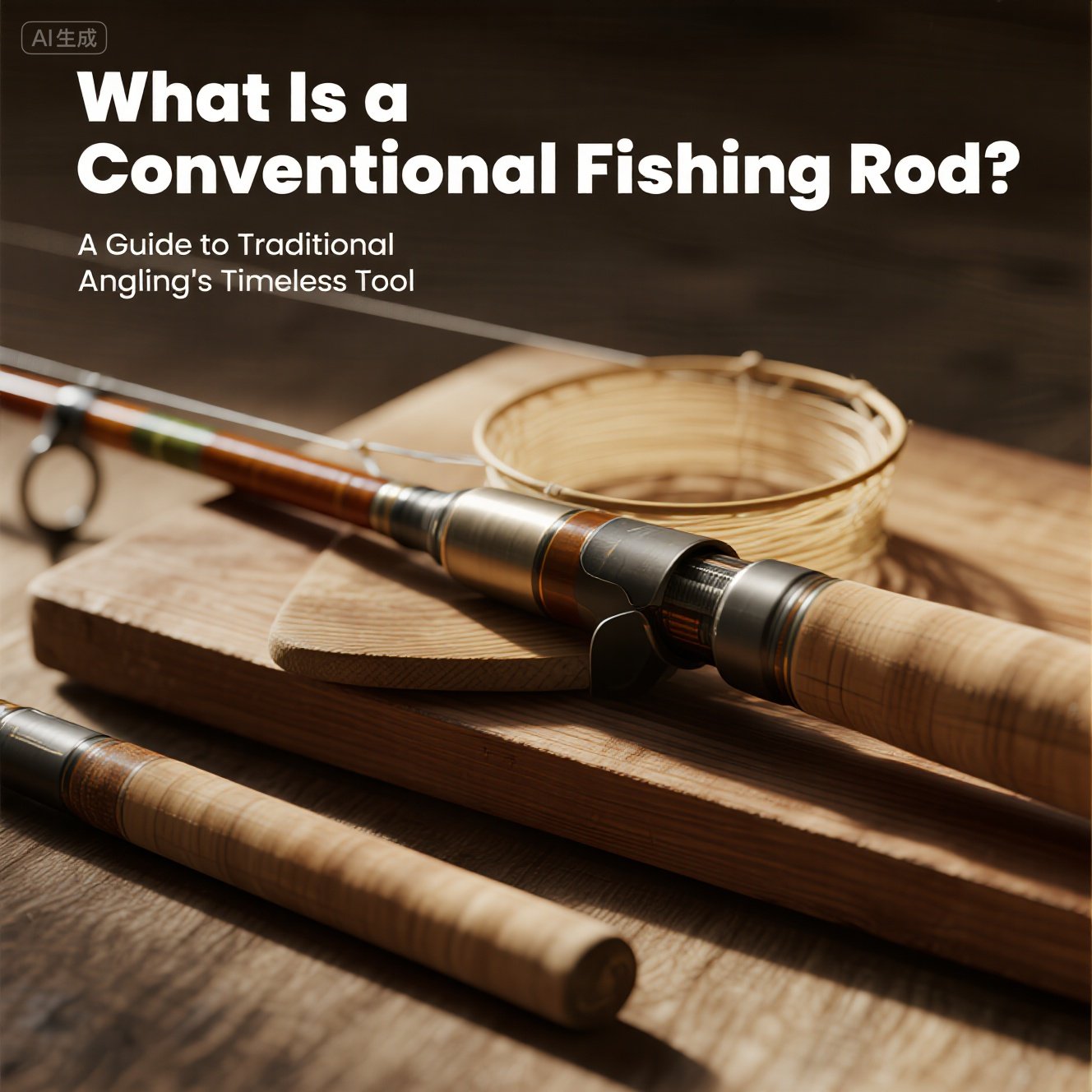What Is a Conventional Fishing Rod? A Guide to Traditional Angling’s Timeless Tool
When exploring the world of fishing, you’ll encounter a range of rods designed for specific techniques and environments. Among them, the conventional fishing rod stands as a cornerstone of traditional angling, cherished for its simplicity, durability, and connection to fishing’s roots. But what exactly defines a conventional fishing rod, and why do anglers around the world rely on them? In this guide, we’ll break down the essentials, from their design to their purpose, helping you understand why they’re a beloved choice for both novices and seasoned fishermen.
Defining the Conventional Fishing Rod
At its core, a conventional fishing rod is a handcrafted or manufactured tool designed for fishing with a conventional reel (often called a “spinning reel” or “baitcasting reel,” though distinct from ultralight or specialized rods). Unlike modern, high-tech rods built for speed or sensitivity, conventional rods prioritize versatility and timeless design. They typically feature:
- A moderate to heavy action (bending primarily at the tip or midsection), ideal for casting heavier lures or handling larger fish.
- A straightforward structure: a flexible shaft (rod blank), guides (eyes) to direct the line, a reel seat to secure the reel, and a handle for grip.
- Materials ranging from traditional woods (e.g., ash, cedar, or bamboo) to fiberglass or early graphite composites—choices that prioritize durability over lightweight performance.
While “conventional” might seem vague, the term distinguishes these rods from specialized types like ultralight, travel, or ice fishing rods, focusing instead on their adaptability to general freshwater or saltwater fishing scenarios.
Key Features of a Conventional Fishing Rod
To appreciate their value, let’s dive into the components that make a conventional fishing rod unique:
1. Rod Blank & Action
The blank (the rod’s base material) determines flexibility and strength. Traditional blanks (e.g., split bamboo or solid fiberglass) offer a “feel” for bites that modern rods often lack. Actions range from “slow” (deep flexing for finesse) to “fast” (stiff tip for quick hooksets), allowing anglers to match the rod to their target species (e.g., bass, trout, or bottom-feeders).
2. Guides & Line Management
Spaced evenly along the shaft, guides (usually metal or high-strength plastic) prevent line friction and distribute stress. On conventional rods, guides are often larger than those on ultralight rods, accommodating thicker lines for rugged use. Hand-wrapped thread patterns around guides—sometimes dyed in vibrant colors—are a hallmark of artisanal craftsmanship, adding both function and aesthetic appeal.
3. Reel Seat & Handle
The reel seat, where the conventional reel attaches, is engineered for a secure, comfortable fit. Handles, often wrapped in cork or EVA foam, prioritize grip and reduce fatigue during long casts. In traditional wooden rods, handles may even feature intricate carvings, blending utility with artistry.
4. Length & Versatility
Conventional rods typically range from 5ft to 10ft, with longer lengths (8ft+) excelling for open-water casting and shorter options (5–6ft) ideal for tight spaces like streams or piers. Their neutral design makes them suitable for both freshwater (lakes, rivers) and saltwater (surf, inshore) environments, a versatility that modern specialized rods often sacrifice.
Why Do Anglers Choose Conventional Fishing Rods?
Their staying power stems from three key advantages:
1. Durability That Stands the Test of Time
Built with robust materials and timeless construction, a well-maintained conventional fishing rod can last decades—outlasting modern rods that may warp or weaken with heavy use. This longevity makes them a wise investment for anglers who value sustainability and cost-effectiveness.
2. A Connection to Fishing’s Heritage
For many, fishing is more than a hobby; it’s a link to tradition. Conventional fishing rods embody this legacy, harking back to eras when craftsmanship was paramount and every rod was a labor of love. Whether you’re inheriting a family heirloom or purchasing from a skilled artisan, these rods carry stories and pride.
3. Reliability in Diverse Conditions
Their balanced design—neither too stiff nor too flexible—makes them forgiving for beginners while satisfying experienced anglers. Whether battling strong currents, casting into heavy cover, or targeting elusive species, a conventional rod’s predictable action inspires confidence.
How to Choose the Right Conventional Fishing Rod
Selecting the perfect rod depends on your goals, but here are key factors to consider:
- Target Species: Heavier rods (fast action) suit large fish like salmon or tuna; lighter models (moderate action) work for panfish or trout.
- Fishing Environment: Saltwater rods may require corrosion-resistant materials (e.g., stainless steel guides), while freshwater rods prioritize flexibility.
- Reel Compatibility: Ensure the reel seat accommodates your conventional reel (spool size, weight) for optimal balance.
- Budget & Craftsmanship: Mass-produced rods offer affordability, but handcrafted options (e.g., split bamboo or custom fiberglass) provide unique character and performance.
Caring for Your Conventional Fishing Rod
To preserve its beauty and functionality:
- Store Vertically: Use a rod rack to prevent warping or bending.
- Clean Thoroughly: Rinse with fresh water after saltwater use; wipe down freshwater rods to remove algae or dirt.
- Inspect Guides: Tighten loose guides or replace damaged ones to avoid line fraying.
- Avoid Extreme Conditions: Store away from direct sunlight, freezing temperatures, or excessive moisture.
Embracing the Timeless Art of Conventional Fishing Rods
In an age of high-tech gadgets and instant gratification, the conventional fishing rod stands as a reminder of fishing’s roots: simplicity, craftsmanship, and a deep respect for the craft. Whether you’re casting for dinner, seeking solitude by the water, or honoring a family tradition, these rods deliver reliability, durability, and a connection to the angling heritage that built the sport.
Ready to experience the joy of traditional fishing? Explore handcrafted conventional rods from artisanal makers or trusted brands—your next adventure awaits with a tool that’s as timeless as the waters you’ll fish.











Leave a comment